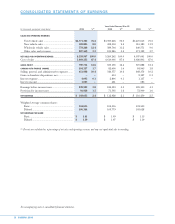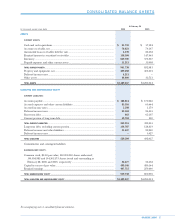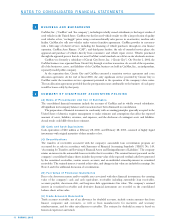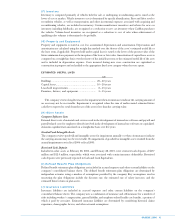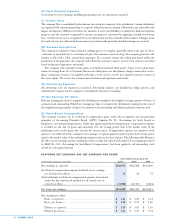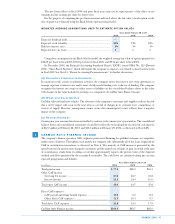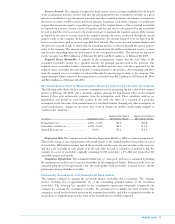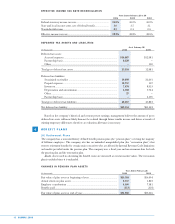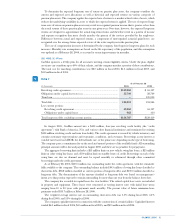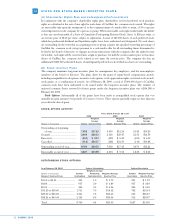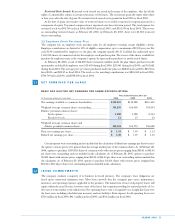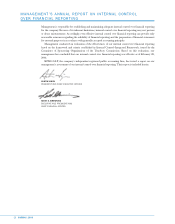CarMax 2006 Annual Report Download - page 48
Download and view the complete annual report
Please find page 48 of the 2006 CarMax annual report below. You can navigate through the pages in the report by either clicking on the pages listed below, or by using the keyword search tool below to find specific information within the annual report.
46
CARMAX 2006
PAST DUE ACCOUNT INFORMATION
As of February 28 or 29
(In millions) 2006 2005 2004
Accounts 31+ days past due......................................................... $ 37.4 $ 31.1 $ 31.4
Ending managed receivables ........................................................ $2,772.5 $2,494.9 $2,248.6
Past due accounts as a percentage
of ending managed receivables ............................................... 1.35% 1.24% 1.40%
CREDIT LOSS INFORMATION
Years Ended February 28 or 29
(In millions) 2006 2005 2004
Net credit losses on managed receivables.................................... $ 18.4 $ 19.5 $ 21.1
Average managed receivables....................................................... $2,657.7 $2,383.6 $2,099.4
Net credit losses as a percentage
of average managed receivables.............................................. 0.69% 0.82% 1.01%
Recovery rate ................................................................................ 51% 46% 42%
SELECTED CASH FLOWS FROM SECURITIZED RECEIVABLES
Years Ended February 28 or 29
(In millions) 2006 2005 2004
Proceeds from new securitizations................................................ $1,513.5 $1,260.0 $1,185.5
Proceeds from collections reinvested in
revolving period securitizations............................................... $ 757.5 $ 590.8 $ 514.9
Servicing fees received................................................................... $ 27.3 $ 24.5 $ 21.5
Other cash flows received from the retained interest:
Interest-only strip receivables .................................................. $ 82.1 $ 79.8 $ 74.1
Reserve account releases.......................................................... $ 19.7 $ 14.1 $ 16.6
Proceeds from New Securitizations. Proceeds from new securitizations include proceeds from receivables
that are newly securitized in or refinanced through the warehouse facility during the indicated period.
Balances previously outstanding in public securitizations that were refinanced through the warehouse facility
totaled $94.8 million in fiscal 2006 and $51.0 million in fiscal 2005. Proceeds received when the company
refinances receivables in public securitizations are excluded from this table as they are not considered to be
new securitizations.
Proceeds from Collections. Proceeds from collections reinvested in revolving period securitizations represent
principal amounts collected on receivables securitized through the warehouse facility that are used to fund new
originations.
Servicing Fees. Servicing fees received represent cash fees paid to the company to service the securitized
receivables.
Other Cash Flows Received from the Retained Interest. Other cash flows received from the retained interest
represent cash received by the company from securitized receivables other than servicing fees. It includes cash
collected on interest-only strip receivables and amounts released to the company from reserve accounts.
Financial Covenants and Performance Triggers
Certain of the securitization agreements include various financial covenants and performance triggers. These
agreements require the company to meet financial covenants related to maintaining minimum tangible net
worth, maximum total liabilities to tangible net worth ratio, minimum tangible net worth to managed assets
ratio, minimum current ratio, minimum cash balance or borrowing capacity, and minimum fixed charge
coverage ratio. Performance triggers require certain pools of securitized receivables to achieve specified
thresholds related to portfolio yields, default rates, and delinquency rates. If these financial covenants and/or
thresholds are not met, in addition to other consequences, the company may be unable to continue to
securitize receivables through the warehouse facility or it may be terminated as servicer under the
securitizations. At February 28, 2006, the company was in compliance with the financial covenants, and the
securitized receivables were in compliance with the performance triggers.


